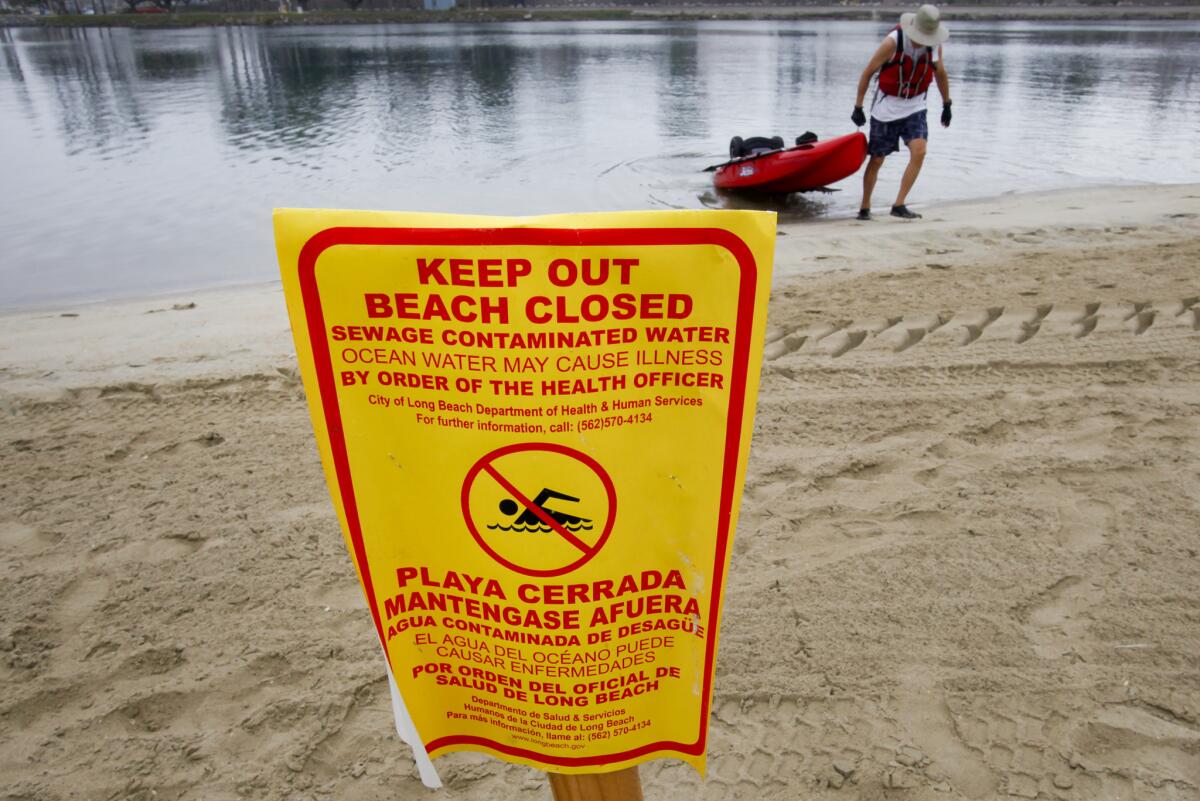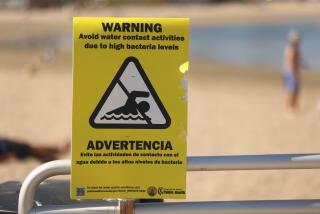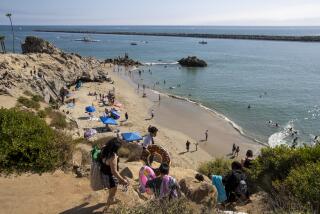U.S. beach pollution dips but remains too high, report says

Beaches across the country are being polluted with tainted runoff and sewage at a stubbornly high rate, putting swimmers at risk of getting sick, according to a new report by an environmental group.
The Natural Resources Defense Council found the number of beach water samples that failed health tests dipped to 7% last year from 8% the year before, but said the drop is the result of less rainfall flushing contaminants to the shore, not an overall decline in pollution.
Delaware, New Hampshire and North Carolina had the cleanest beaches in 2012, according to the groupâs annual Testing the Waters report. The states with the most polluted beaches were Minnestota, Wisconsin and Ohio.
The findings showed little progress for California beaches, which were responsible for 25% of the beach closures in the nation. California ranked 20 out of 30 states for beach water quality.
The number of beach closings and advisories in California fell slightly in 2012, but not nearly enough to show that beach pollution is improving, said Noah Garrison, staff attorney for the Natural Resources Defense Council.
âWe want to see that number dropping,â he said. âUnfortunately we still see large numbers of closing and advisory days and we still have persistent pollution problems at our beaches.â
The report analyzed bacterial test results and public advisories from more than 3,000 beaches in 30 coastal and Great Lakes states. A high bacteria count indicates the presence of pathogens that can can give swimmers skin rashes, eye infections or stomach and respiratory illnesses.
Interactive maps in the report allow readers to search by ZIP Code with mobile phones to find water quality ratings and swimming advisories for their favorite beach.
Some California beaches ranked among the cleanest in the nation. Bolsa Chica Beach, Newport Beach and San Clemente State Beach were named in the reportâs list of 13 âfive-starâ beaches for their âexceptionally low violation rates and strong testing and safety practices.â
Avalon Beach on Santa Catalina Island, and Orange Countyâs Doheny State Beach and Poche County Beach, however, made the nationwide list of 11 ârepeat offenders,â beaches that fail health tests more than 25% of the time.
The report called for stronger beach water quality standards to prevent swimmers from being exposed to contaminated beach water. The U.S. Environmental Protection Agency last year approved a new set of beach water quality standards, but environmental groups say they are not stringent enough to protect public health.
The Natural Resources Defense Council also recommended adopting faster testing methods. The bacteria-based tests used to monitor beaches across the country can take several days to obtain results and warn swimmers.
âYou could go swimming Saturday morning at the beach and not know until Monday whether itâs safe to get in the water,â Garrison said.
Some areas, such as Orange County, have experimented with beach water tests that provide same-day results, but they are not yet widely used.
To clean up beaches in the long term, the council said coastal areas should build rain-absorbing infrastructure to prevent contaminated runoff from reaching the shore or triggering sewage overflows.
ALSO:
Nuclear fallout drops the bomb on ivory poachers
Whole milk might be better choice for children, scientists say
Asthma medicine shows promise for Down syndrome in mice tests
Twitter: @tonybarboza







